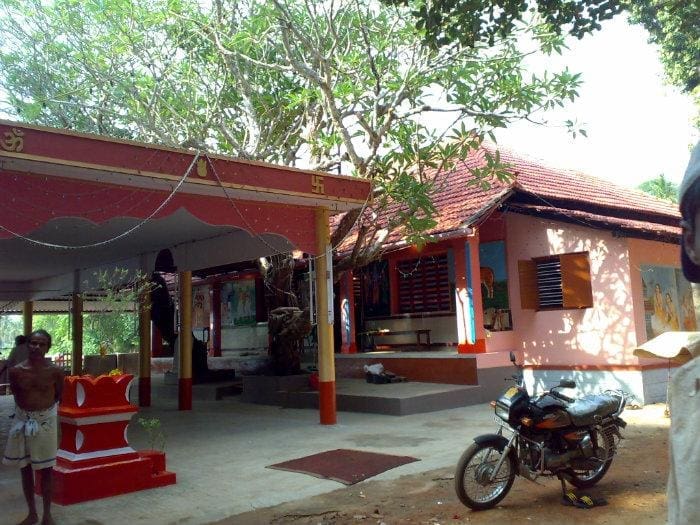
Culturally Dakshina Kannada and Udupi districts have much to offer to whet the appetite. The dimensions and explanations for the innumerable rituals prevailing are plenty.
The Garodi belongs to this genre.

The Garodi is neither a temple nor a bhoothastana (A place for spirit worship) characteristic of this region. Garodi is a place of worship of Koti and Chenayya, the twin heroes who valiantly fought against oppression and laid their lives for the cause some three hundred years ago. The structure has a strong resemblance to a temple, complete with the typical tower in the foreground.
There are about 210 Garodis scattered all over Dakshina Kannada and Udupi Districts, with the highest concentration in Udupi and Karkala Taluks. All Garodis do not resemble the temple. Some remind you of an ancient tiled house with carved pillars and antique wooden windows.

Garodis are located near the water sources like rivers. On entering the Garodi, what one encounters first is the courtyard with a Tulasikatte (Ocimum sanctum or Holy basil) right at the centre. The courtyard leads to the inner sanctum sanctorum where the main deities are kept.
Historical Background
According to the historians, three hundred years ago during the reign of the Vijayanagar Empire, Garodis were in fact military schools where commanders used to be trained in martial arts. But after the downfall of the Vijayanagar Empire in the mid 16th century and with the arrival of advanced weapons with the British invasion, these centres became symbolic martial centres.

A big wooden bench placed in front of the Garodi even today are a testimony to the fact that Garodis were centres of martial arts training earlier. However after Koti Chennaya attained martyrdom, the Garodis were elevated as worshiping centres as the two were closely associated with Garodis. Thus they became parallel temples for people particularly of lower castes who were prohibited from entering temples. Deprived of equality and dignity and ill treated for centuries Koti Chennayya became heroes and were then elevated to the status of Gods by the Billava community.
Paddana, the rich ballads of the region is a repository of the legends of Koti Chennayya and the history of the innumerable Garodis. According to the Paddana there should be 66 Garodis and 33 taus. Tau is the venue where the annual Garodi Festival, the Baidhare Jathre is held if there is no Garodi in the vicinity. The number of garodis and taus increased owing to the natural human tendency to prop up egos. Thus today there are 210 garodis in Dakshina Kannada District and 67 in Udupi followed by 21 in Karkala to seven in Belthangady and two in Kasaragod.
The construction
The Aya which is the fundamental layout of the sanctum sanctorum is strictly adhered to in all garodis. The rectangular shaped structure is divided into two portions – the inner one third houses the principal deities – the Brahma and Baider.
The inner sanctum sanctorum is dimly lit and separated from the outer by a decorative wooden barrier.
The deity ‘Brahma‘ is placed inside a small ‘mantap’ made of Panchaloha. The idol of ‘Brahma‘ is placed in the mantap only on special occasions like Sankramana. The mantap is situated directly over an underground water source. This indicates the association of the Garodis with elements of nature.
The ‘Baider‘ is the towering wooden statues of Koti Chennayya standing in the dark corner of the inner sanctum sanctorum. A colourful wooden statue of a horse stand solitarily in the other corner. Seated on the left side of the door outside the sanctum sanctorum is the wooden statue of the bearded Jogi Purusha.
The hidden story
The wooden statues of Jogi Purusha, the Muslim boy and the horse which are mandatory in all Garodis have interesting legends.
The horse has a different tale to tell. Long ago, a statue of the horse was found outside one of the garodis. After failing to get the statue inside the sanctum sanctorum through the small door, the men retired for the day only to be surprised to see the large statue inside the sanctum sanctorum the next morning.
The legends highlight the powers of the deity, the power to ward off evil, the power to grant wishes and the power to protect the laity.

Be the first to comment